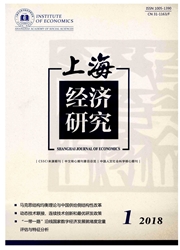

 中文摘要:
中文摘要:
财政支出究竟是挤入还是挤出了私人消费,与财政支出的构成有关。本文基于18个OECD国家的数据样本,在对财政支出采用了更加细致的分类基础上,用PVAR方法分析了各种财政支出对私人消费的冲击效应。研究结论表明:首先,财政总支出挤出了私人消费;其次,财政投资支出也是挤出了私人消费;而财政消费支出对私人消费的冲击效应却是正的;从趋势来看,财政投资支出对私人消费的冲击效应大于财政消费支出的冲击效应,而且更具持久性;最后,从财政消费的分项看,财政工资消费挤出了私人消费而财政非工资消费挤入了私人消费,但是财政非工资消费对私人消费的挤入效应大于财政工资消费对私人消费的挤出效应。本文的研究对相关的理论研究、实证研究以及宏观管理有一定的启示作用。
 英文摘要:
英文摘要:
What are the impact of shocks to government spending on the private consumption ? Our key finding follows: firstly, a shocks to total government spending on the private consumption produces a negative effect; secondly, government investment shocks crowd out the private consumption, but Shocks in government consumption produce a positive private consumption responses. And the crowd out effect from shocks to government investment on the private consumption is larger and more persistent than the crowd in effect from shocks to government consumption on the private consumption; finally, When government consumption is broken down into the wage and non-wage components, a shock to the latter crowds in private consumption while a shock to the former crowds out private consumption; but the crowd in effect from shocks to the non-wage component of government consumption on the private consumption is larger than the crowd out effect from shocks to wage government consumption on the private consumption.
 同期刊论文项目
同期刊论文项目
 同项目期刊论文
同项目期刊论文
 期刊信息
期刊信息
